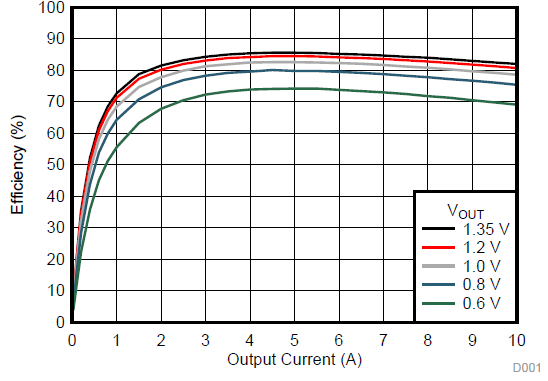SSZTAF2 february 2017 TPSM84A21 , TPSM84A22
In my blog, Designing with integrated DC/DC power modules: do I still need external capacitors?, I discussed how it’s critical to go beyond just the front page of the data sheet to get the full story about a power module’s integration and solution size. In this installment, I’ll talk about similar issues with power module transient response and efficiency.
Transient response is one of the most challenging module features to condense into a front-page bullet list. This difficulty often causes manufacturers to claim that their device has something like “ultra-fast transient response,” which comes dangerously close to not meaning anything. For sensitive digital loads, knowing that a device’s transient response is ultra-fast is not sufficient. It’s important to know how far your output voltage will overshoot and undershoot, and how long it will take to recover. By making sure that the test conditions in the data sheet line up closely with your real application, you can easily evaluate how the device will perform in your system.
 Figure 1 TPSM84A21 Transient
Performance Data
Figure 1 TPSM84A21 Transient
Performance DataA module’s load transient performance is also closely tied to the device’s output capacitance. That is where the module integration question arises again. Even modules with integrated capacitors may have transient data pulled under “ideal” conditions, with lots of additional output capacitance. Piling on bulk capacitance can make for a nice-looking transient plot, but it can also make for an unwieldy power supply. Don’t assume that the plots in the data sheet are derived under “typical application conditions” unless this is explicitly stated.
Discussing efficiency in a concise way can be similarly challenging. One advantage that efficiency has over other data-sheet parameters is that there’s often an efficiency curve. It’s a lot less likely that module manufacturers will attempt to inflate the performance of their device with so many data points readily available, but there are still a few places you can get tripped up.
 Figure 2 TPSM84A21 Efficiency
Plot
Figure 2 TPSM84A21 Efficiency
PlotFor converters with variable switching frequencies, the frequency at which the device is operating has a major impact on efficiency performance – make sure that data is available for the condition at which you’ll be operating. Similarly, efficiency can vary widely across the module’s input and output voltage ranges. Only the most appealing efficiency curve will make it to the front page, so looking at the device’s performance under a variety of conditions is key to getting the whole picture.